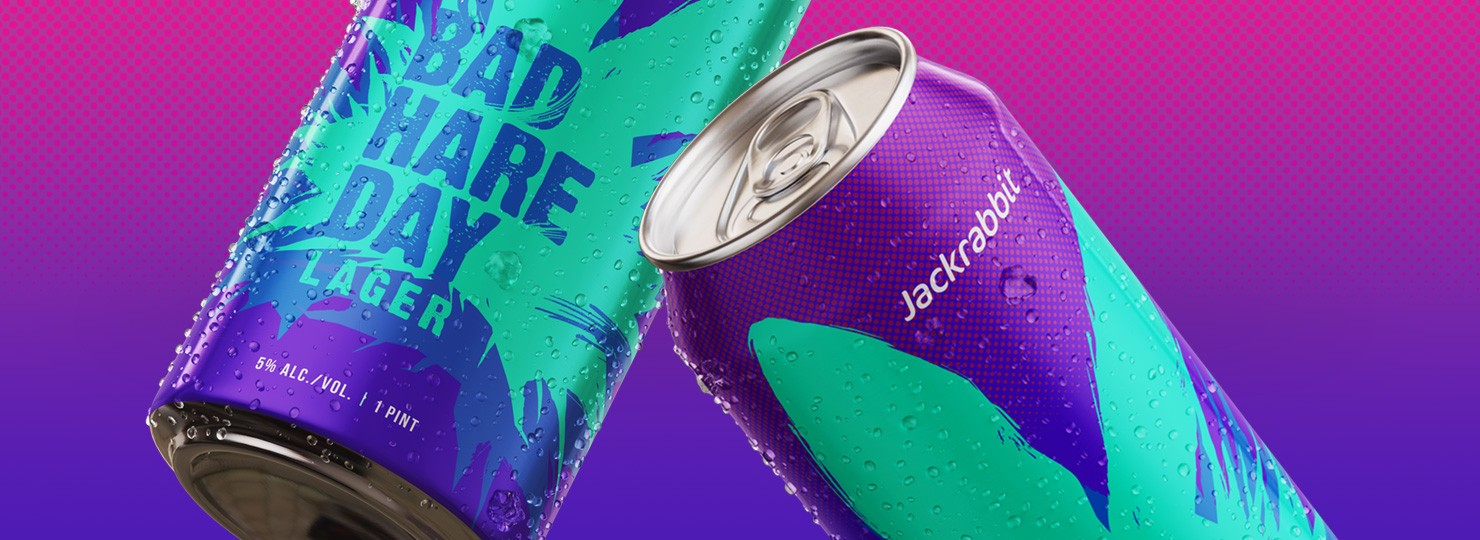

Designing a beer label that’s both creative and compliant with TTB regulations can be a daunting task! Whether you’re a graphic designer creating a new beer label or a brewery seeking a designer to create it for you, you’ll want to be up to speed on the details of beer label regulations and how they affect the design of your label. This Design Guide to Beer Label Requirements will help you get the details correct from the get-go, avoid your COLA label application from getting rejected by TTB, and keep beer releases on schedule!
The Advertising, Labeling, and Formulation Division (ALFD) of the Alcohol and Tobacco Tax and Trade Bureau (better known as the “TTB”) is responsible for enforcing how producers both label and market their beer. Not only are TTB’s regulations very specific but they are also strictly enforced through a federal approval process of label designs. In fact, a Certificate of Label Approval (COLA) is required for all beer labels.
We’ve pulled together the most important details you need to know for navigating the rules and regulations. Our goal is for this guide to be an informative reference so your approval process on beer labels is easier! We’ll guide you through some specific TTB requirements that deal with font legibility, contrast, size, and placement of the mandatory info as well as what you can and can’t put on your beer labels. And although the word “label” implies beer bottles, these guidelines are equally applicable to beer cans.
First, let’s take a look at the basic content found on beer packaging in the diagram below, and then we’ll get into the details.
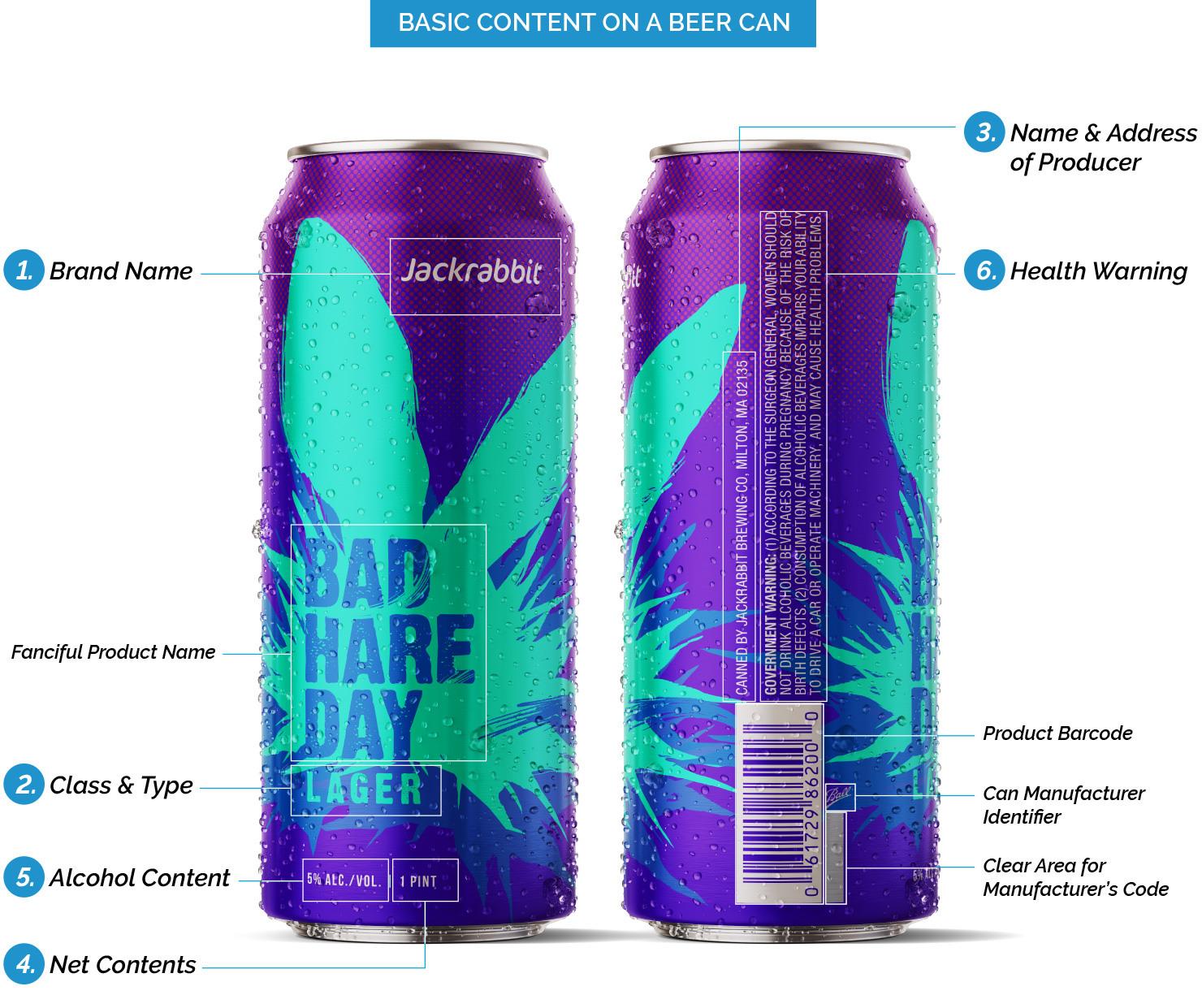
| The Basics of Malt Beverage Labeling Requirements: |
| 1. Brand Name |
| 2. Class & Type Designation |
| 3. Name & Address of Producer/Bottler |
| 4. Net Contents |
| 5. Alcohol Content |
| 6. Health Warning |
| 7. Country of Origin (for imported beverages) |
| 8. Draft or Draught |
| 9. Disclosures for Specific Ingredients |
| 10. Lite/Light/Low Carb |
| Additional Considerations: |
| Voluntary Nutrient Content Statements |
| The Voluntary Disclosure Initiative |
| Voluntary Independent Craft Brewer Seal |
| Voluntary Allergen Statement |
| Prohibited on Beer Labels |
| Preparing Your Label Images for Upload to TTB’s Online Application |
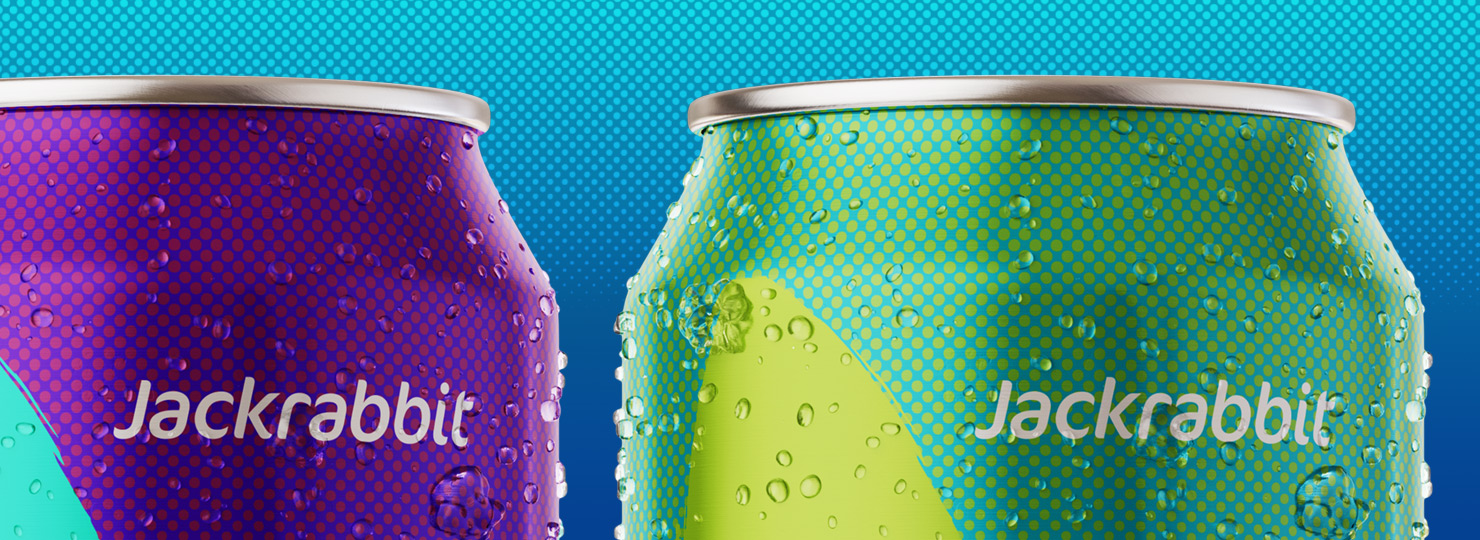
The brand name must appear on the label to clearly identify the malt beverage in the market. Basically, this is the official name under which the beverage is marketed. In many cases, the brand name appears visually in the form of a logo or wordmark. Here are some specifics.
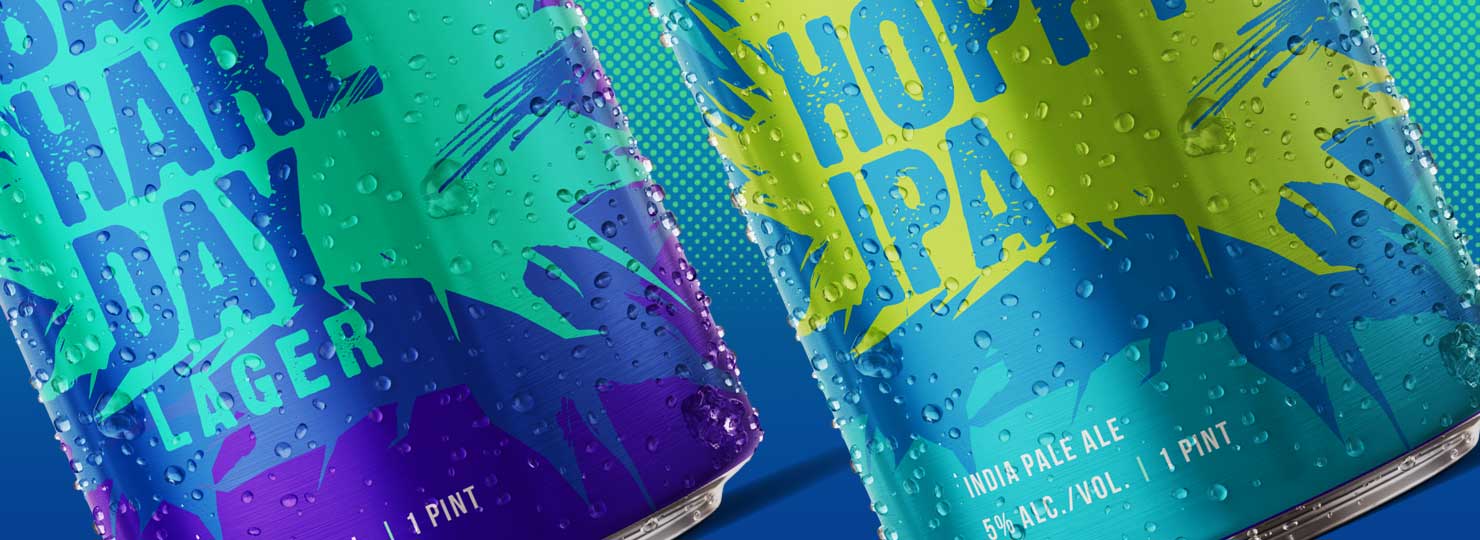
It is required that you identify the specific CLASS and/or CLASS and TYPE of malt beverage on the label design. The TTB uses “malt beverage” as the general name for all products made at a brewery with malted barley and hops. This includes products like beer, ale, and lager as well as flavored malt beverages. TTB’s Beverage Alcohol Manual is very detailed in defining all acceptable classes and types. Below is a chart showing the acceptable terms you can use.
| General Classes of Malt Beverages |
| Ale |
| Beer |
| Cereal Beverage |
| Lager / Lager Beer |
| Malt Beverage Specialty |
| Malt Liquor |
| Near Beer |
| Porter |
| Stout |
| Specific Types of Malt Beverages | |
| Amber Ale | Half and Half |
| Amber Lager | Ice Beer |
| Barley Wine Ale | Imperial Stout |
| Barley Wine Style Ale | India Pale Ale |
| Bavarian | Kulmbacher |
| Bitter Ale | Munich |
| Black and Tan | Munchner |
| Bock Beer | Pale Ale |
| Brown Ale | Pils |
| Cream Ale | Pilsen |
| Cream Stout | Pilsener |
| Dortmund | Pilsner |
| Dortumnder | Rye Beer |
| Draft Beer | Salvator |
| Draught Beer | Stock Ale |
| Dry Beer | Vienna |
| Export Ale | Wein |
| Export Beer | Weiner |
| Golden Ale | Wheat Beer |
| Golden Lager | Wurtzburger |
One very common mistake on beer label designs is using the abbreviation “IPA” by itself, which is not an acceptable abbreviation to satisfy class and type designation. Using “IPA” by itself is a sure way to get your label application rejected unless you also spell out the word “Ale” in the minimum type size somewhere. The requirements indicate it must be on the front, however on wrap-around designs we’ve seen TTB approve it placed on what might be considered the “side” of the can vs. the front view.
Breweries often prefer to use the abbreviation “IPA” large on the front but if you look carefully, you’ll notice they’ve also included it spelled out as “India Pale Ale” in the minimum font size to satisfy this requirement, or at the very least they’ve included “Ale” or “Beer.”
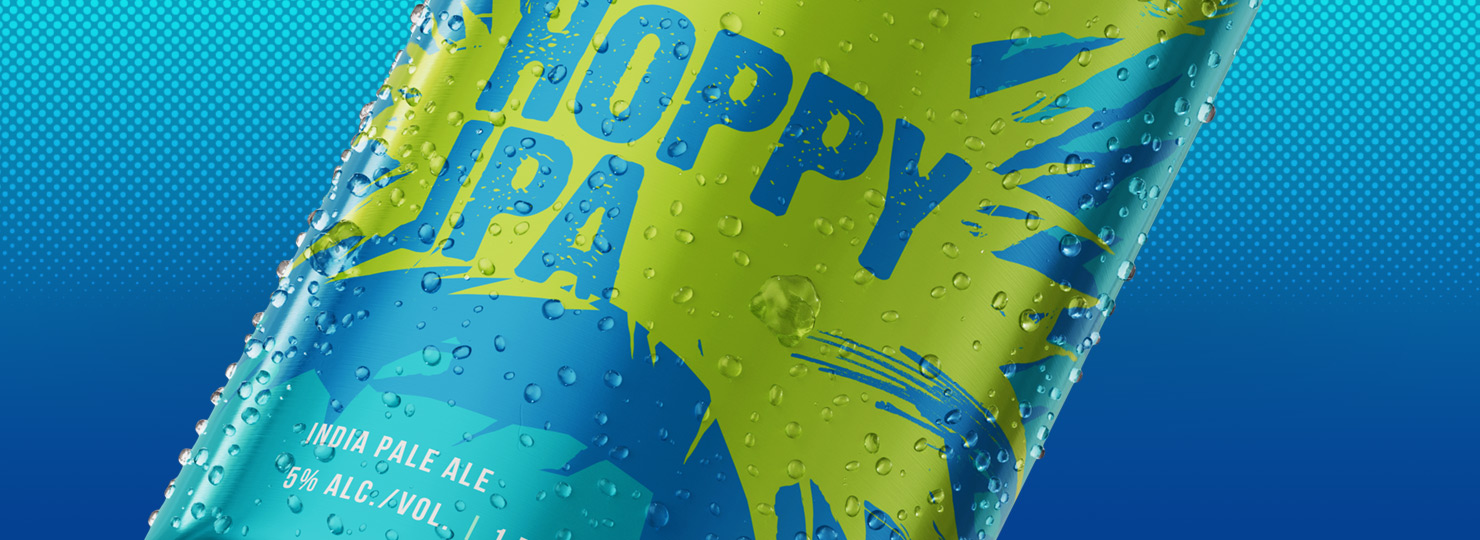
Another common mistake is using a super stylized font for the class and type designation which makes it difficult to read. Avoid any crazy fonts for the mandatory info; these could get your label application rejected for not being legible enough. It needs to clearly communicate there is a malt beverage in the container.
The name and address of the producer/bottler or packer must appear on the label. This name would be identical to what is written on the brewer’s official notice. Optionally, it can be preceded by an explanatory phrase such as “BREWED BY”, “BOTTLED BY,” or “BREWED AND BOTTLED BY.” The address must be the city and state where the beer is bottled or packed.
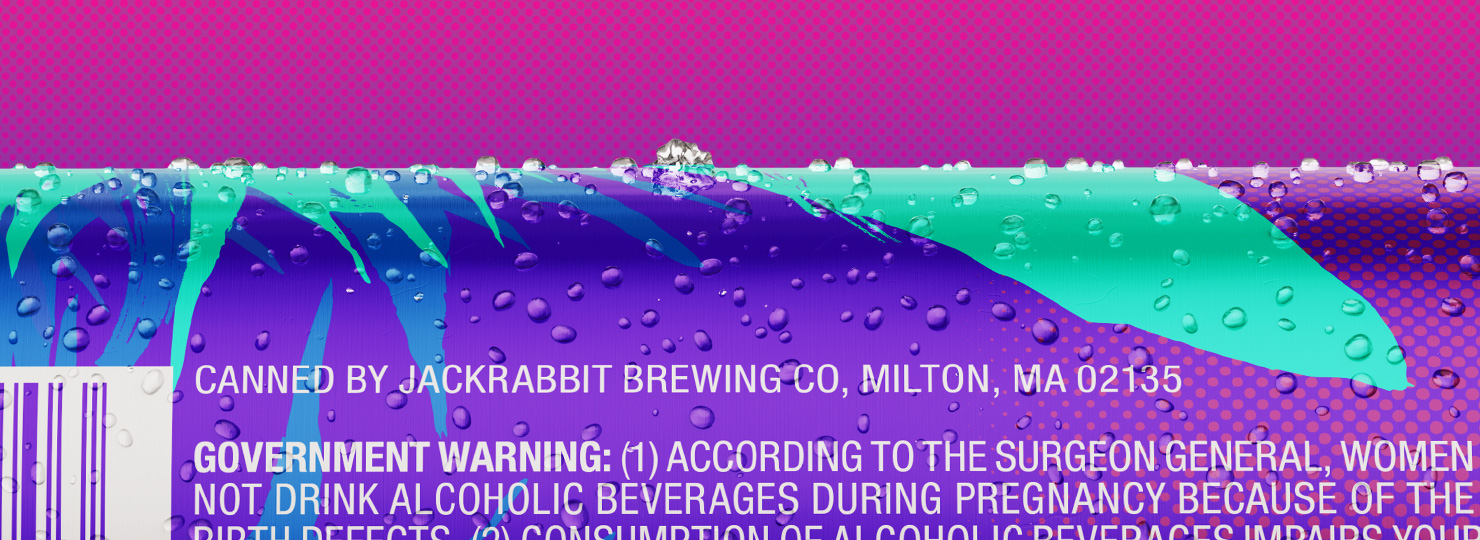
The container size must appear on the label, expressed in American measure.
One common mistake on beer packaging is using “16 FL. OZ.” instead of “1 PINT” for 16 oz. containers. The only time a container can be expressed in fluid ounces is when it is LESS than 16 fl. oz. or to express a fraction of a pint for a container greater than 16 fl. oz. e.g., “1 PINT, 4 FL. OZ.” When it is exactly 16 fl. oz. it must be expressed as “1 PINT” or “1 PINT (473 mL).”
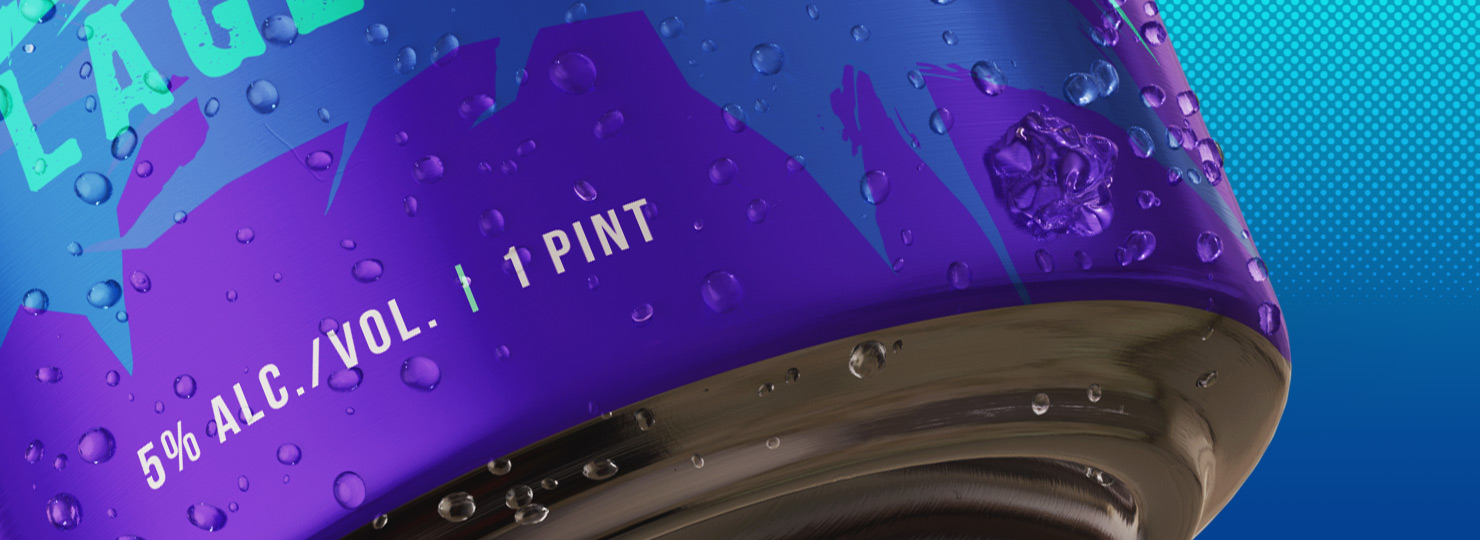
Another common mistake is omitting “FLUID” or “FL.” from “FLUID OUNCES” and “FL. OZ.” respectively.
The amount of alcohol contained in a malt beverage is an OPTIONAL statement unless the beverage derives alcohol from added flavors. However, if you DO choose to state the alcohol content on the label, it must follow the regulations listed below. Some U.S. states have their own requirements on alcohol content statements so look into the states where you plan to sell the beverage.
| Alcohol Content by Volume | |
| a) 5% ALC/VOL | e) 5% ALCOHOL/VOLUME |
| b) 5% ALC BY VOL | f) 5% ALCOHOL BY VOLUME |
| c) ALC 5% BY VOL | g) ALCOHOL 5% BY VOLUME |
| d) ALC BY VOL 5% | h) ALCOHOL BY VOLUME 5% |
One common mistake when designing beer packaging is using the abbreviation “ABV”, which is NOT an acceptable method of stating alcohol content. So always use one of the options from the chart above or your label application may be rejected on your first attempt for approval.
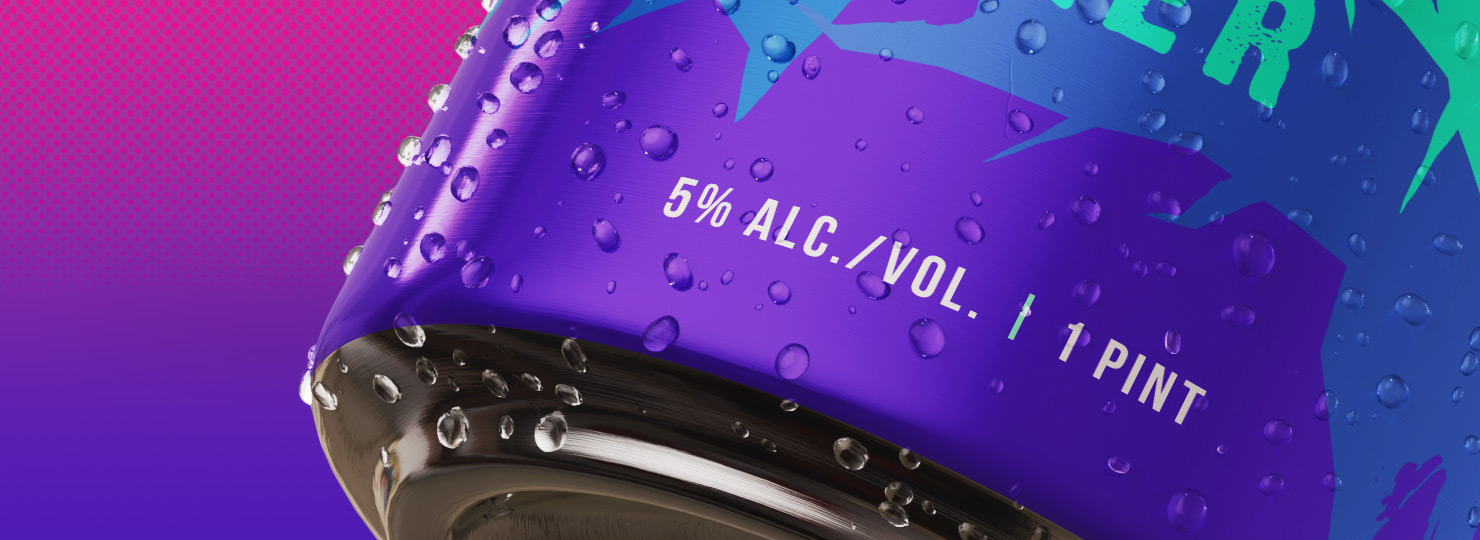
Another common mistake is not measuring the font size correctly for the alcohol statement. This statement needs to be 2mm tall on containers greater than 8 fl. oz. The special characters contained in the statement — the percent symbol and backslash — always throw designers off when measuring. One tip is to always use the capital letter “L” and measure from flat edge of the bottom to the flat edge of the top of this letter. Additionally, don’t include the percent symbol or backslash in your measurements, since these characters often fall above and/or below the other letters, depending on the font.
This is a mandatory statement for all alcohol beverages for sale or distribution in the U.S. containing not less than 0.5% alcohol by volume. No exceptions are made. Therefore, the wording must be exact and cannot be modified. Compliance is strict and if any of the requirements of formatting aren’t met, the label application will not be approved.
| GOVERNMENT WARNING: (1) According to the Surgeon General, women should not drink alcoholic beverages during pregnancy because of the risk of birth defects. (2) Consumption of alcoholic beverages impairs your ability to drive a car or operate machinery, and may cause health problems. |
| Container Size | Minimum Type Size Requirement | Maximum Characters Per Inch |
| 237 mL or less | 1 mm | 40 |
| Over 237 mL (8 fl. oz.) to 3 liters (101 fl. oz) | 2 mm | 25 |
| Over 3 liters (101 fl. oz) | 3 mm | 12 |
Designers often typeset the Health Warning Statement in a tall/condensed font, which is a good tip to help minimize the visual real estate this lengthy statement takes up on the label while still meeting the requirement for font height of 2 mm. However, one common mistake is using a font that is too condensed, exceeding the maximum characters per inch. When typesetting this statement, always carefully follow the requirements and count the characters per inch, including spaces. In the end, compliance is very strict on this one.
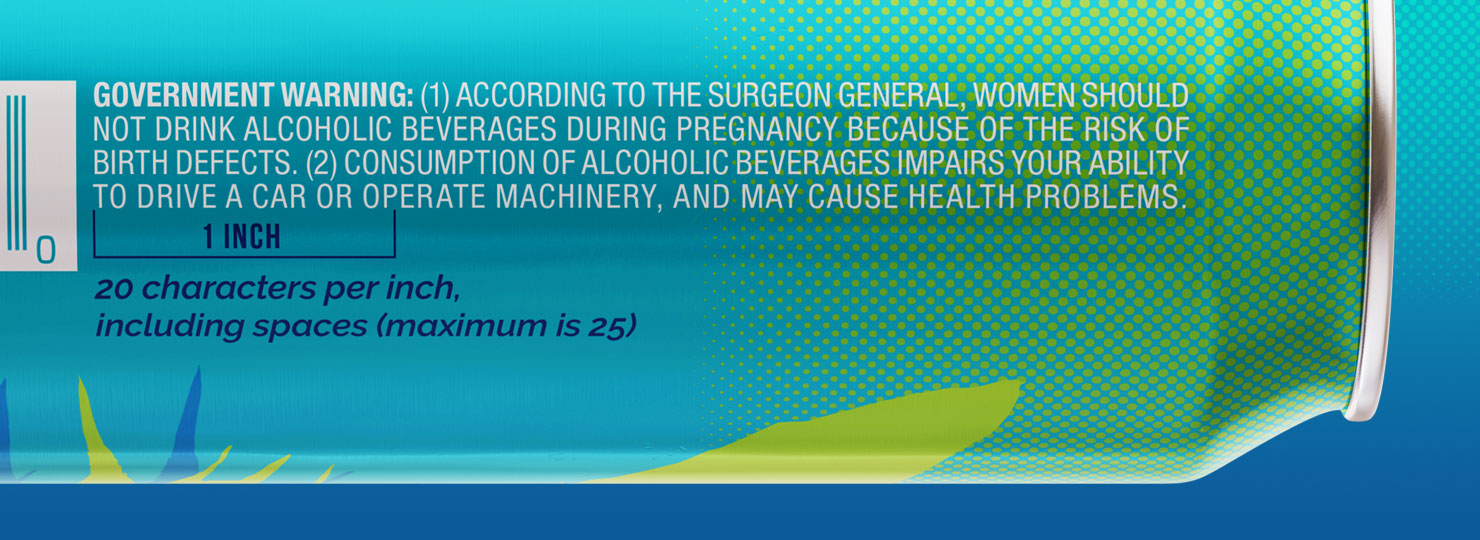
Another common mistake on the Health Warning Statement is to not put the words “GOVERNMENT WARNING” in bold type compared to the remainder of the statement. Basically, these two words must stand out.
A statement of origin is required under U.S. Customs regulations for any imported malt beverage for sale in the U.S. Therefore, if your malt beverage was made in the U.S. for sale in the U.S., the country of origin does not need to be indicated although it may be included.
| Acceptable Statements |
| a) PRODUCT OF insert country |
| b) BREWED IN insert country |
| c) BREWED AND BOTTLED IN insert country |
| d) BREWED AND PACKED IN insert country |
| e) BREWED BY insert name of brewer, country |
| f) BREWED AND BOTTLED BY insert name of brewer, country |
| g) BREWED AND PACKED BY insert name of brewer, country |
| h) insert country ALE (class and/or class and type designation) |
The terms “draft” and “draught” indicate that a beverage hasn’t been pasteurized and that a different method of eliminating and preventing bacteria growth has been used. If this description is accurate for your beer, then you are permitted to use these terms. However, if your brew has been pasteurized, you can still describe it as “draft brewed” as long as you mention somewhere on the label that it’s been pasteurized.
This requirement is only necessary if a malt beverage contains any of the ingredients in the chart below.
| Ingredient | Mandatory Statement |
| FD&C Yellow #5 | CONTAINS FD&C YELLOW #5 |
| Saccharin | USE OF THIS PRODUCT MAY BE HAZARDOUS TO YOUR HEALTH. THIS PRODUCT CONTAINS SACCHARIN WHICH HAS BEEN DETERMINED TO CAUSE CANCER IN LABORATORY ANIMALS. |
| Sulfite | CONTAINS SULFITES” or “CONTAINS (A) SULFITING AGENT(S)” or identification of the specific sulfiting agent(s) |
| Aspartame | PHENYLKETONURICS: CONTAINS PHENYLALANINE |
If you would like to include terms such as “light” or “lite” or make specific nutritional claims such as “99 calories” or “low carb” you must include a Statement of Average Analysis.
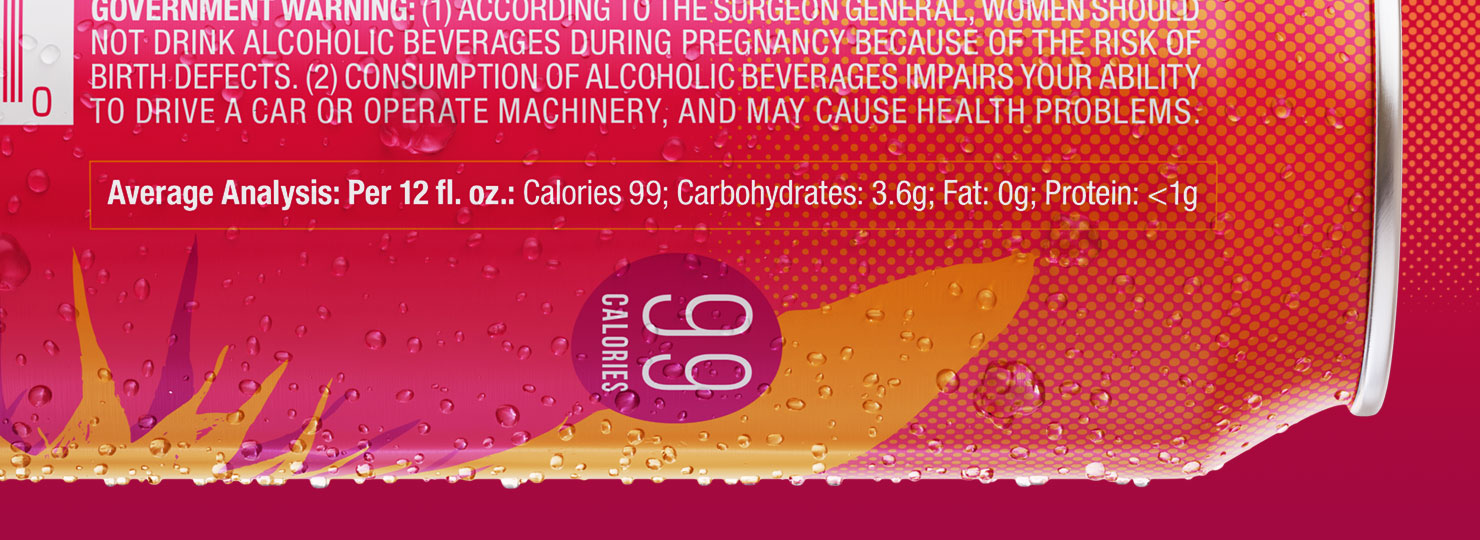
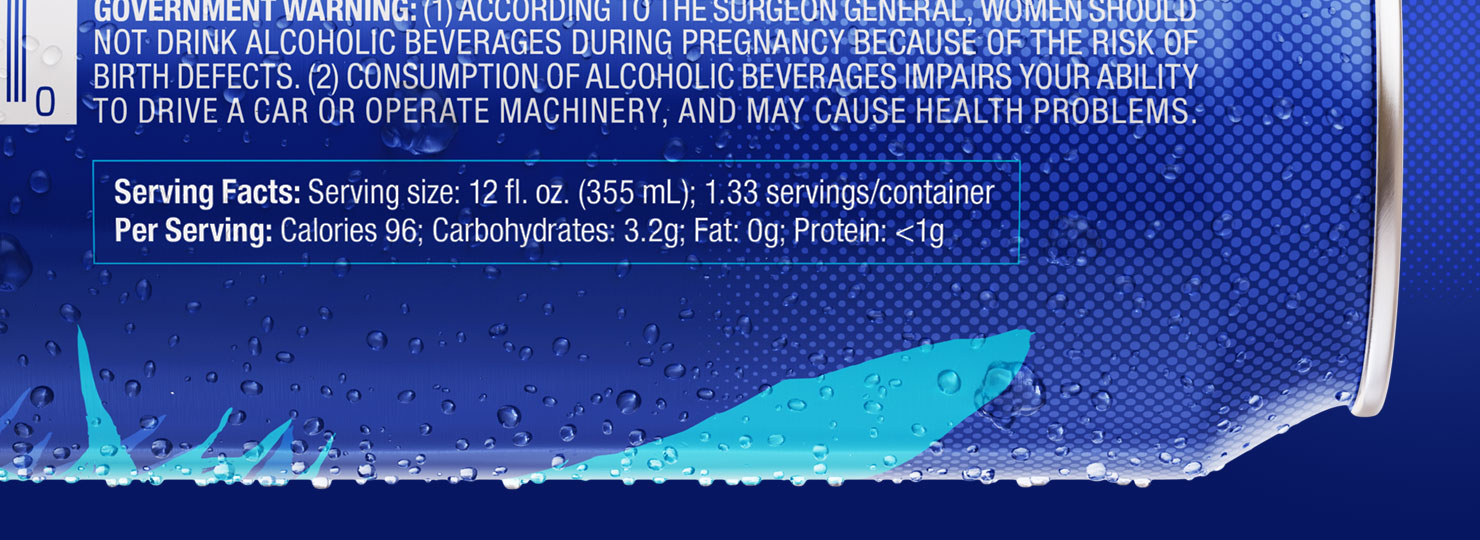
Launched by the Beer Institute in 2016, the Voluntary Disclosure Initiative asks brewers to voluntarily include a serving facts statement and freshness dating on their products as well as disclose ingredients on either the label or secondary packaging via a list of ingredients, a reference to a website with the information, or through a QR code.
Among the Beer Institute members that have agreed to the initiative are industry giants Anheuser-Busch, MillerCoors, HeinekenUSA, Constellation Brands Beer Division, North American Brewers, and Craft Brew Alliance. Together, these companies produce more than 81% of the beer sold in the United States by volume. Specifically, one example of how Anheuser-Busch currently discloses this information online for all their flagship brands is the “Guide to Our Beers” section of their website www.tapintoyourbeer.com.
There currently is no legal requirement to include this information, however, if you can jump ahead of the curve and include it before it’s mandatory it may win you points with consumers who care.
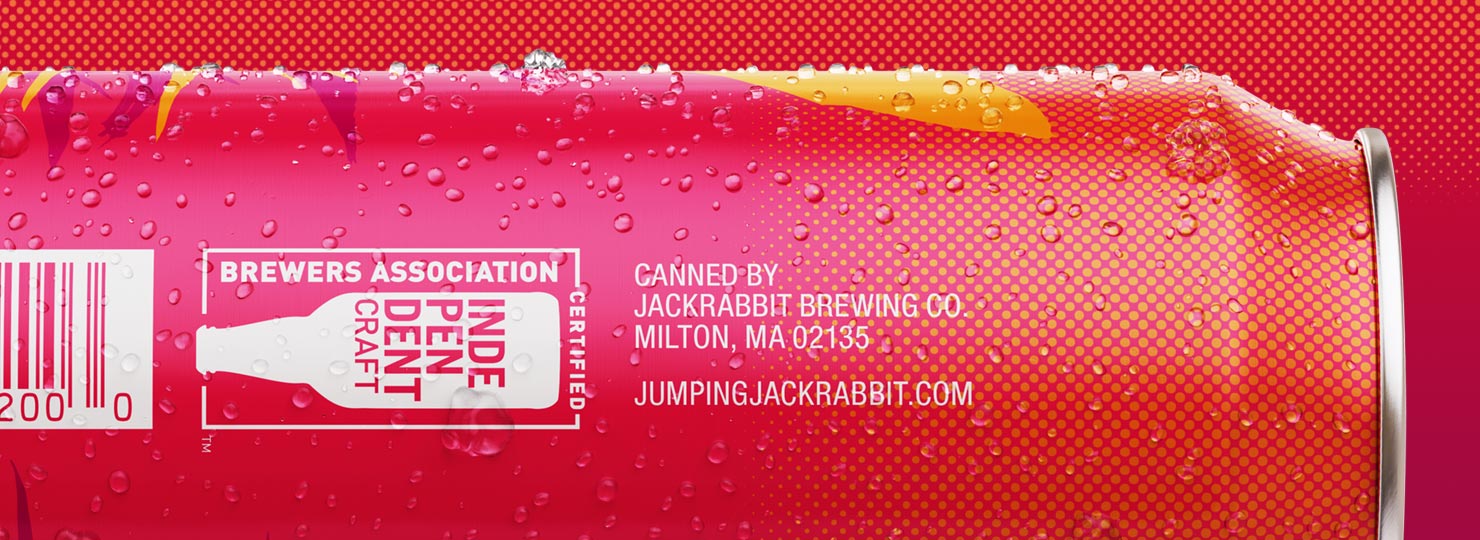
In 2017, the Brewers Association — a non-profit trade association dedicated to small and independent American brewers — launched the Independent Craft Brewer seal. This graphic was quickly adopted by independent breweries around the country, and it was proudly added to packaging and on brewery websites. This graphic not only allows breweries to display their independent spirit but has also become a way for consumers to be 100% certain that the beer they choose to drink is from an independent craft brewery. In addition, it gives consumers a quick and easy way to seek out this beer on the store shelf and support independent brewers.
According to the Brewer’s Association, in 2019 more than 4,700 brewing companies had adopted the independent craft brewer seal, representing nearly 80% of craft beer brewed in the U.S. Also, in October 2019 Delaware became the first state with 100% adoption of the seal with all 21 of its independent craft breweries displaying it.
Although including the seal is not mandatory, you may still choose to display it if you meet the requirements of what defines an independent craft brewery. In this case, the recommended size of the seal is 1.575 “ w x 0.887 “ h and the minimum size is 0.786 “ w x 0.443 “ h.
You may make voluntary disclosures of the major food allergens; milk, eggs, tree nuts, crustacean shellfish, soybeans, peanuts, wheat, and fish. However, a TTB notice of proposed rulemaking was recently posted, which may lead to making allergen disclosures mandatory in the future.
When you’re trying to push the boundaries with your beer label design to grab the consumer’s attention, it’s important to make sure your design doesn’t include any prohibited items listed by the TTB. Any of the following prohibited items can lead to the TTB denying your label design.
In terms of not allowing obscene material, undoubtedly it’s not always clear what the TTB will consider off-limits. This type of ruling is one of the most difficult to navigate where the line is because it depends on what a TTB representative who is reviewing your submission finds obscene or indecent, not you or your customers.
COLAs Online allows registered industry members to apply online for a certificate of label approval (COLA). It also gives registered industry members the ability to track the status of their electronic label submissions and it reduces the time and cost associated with filing paper label applications.
| FILE PREP REQUIREMENTS: | |
| Number of Files | If there are multiple labels on a container, save a separate jpeg for each individual label. For example, for a bottle, that might mean you include separate files for the front, back, and necker labels. For content or graphics that are burned, embossed, or blown into the container itself, this would also be uploaded as a separate file. |
| File Type | Save files as jpegs in RGB mode. |
| File Dimensions | Dimensions of the jpeg must be at 100% actual size. Crop file to actual trim size of the label. Specifically, do not include any bleed in the jpeg. Know what the physical dimensions are of the file size/trim size because you will need these numbers when you upload files. |
| File Size | Each jpeg needs to be less than 1.5MB (as of July 2020). In order to achieve this, export from Photoshop using a jpeg compression/quality ratio of Medium (7 out of 10). |
| File Resolution | Resolution should be at least 120 – 170 dpi |
| Elements to Eliminate | Do not include any vendor dieline marks, templates, or rule lines on your label artwork. For instance, only include what will be visible to the consumer on the final product. Finally, do not include any extra white space surrounding the label. |
If your image quality is too low, then the online system will detect it and give you an error message to try again. Therefore, be sure your small text is legible in the files being uploaded. If the text is blurry in a jpeg, then TTB recommends trying saving it as a PNG. For reference, you can find Q&A for how COLAs Online works on TTB’s website.
Below is what the artwork looks like when exporting the jpeg for TTB submission.
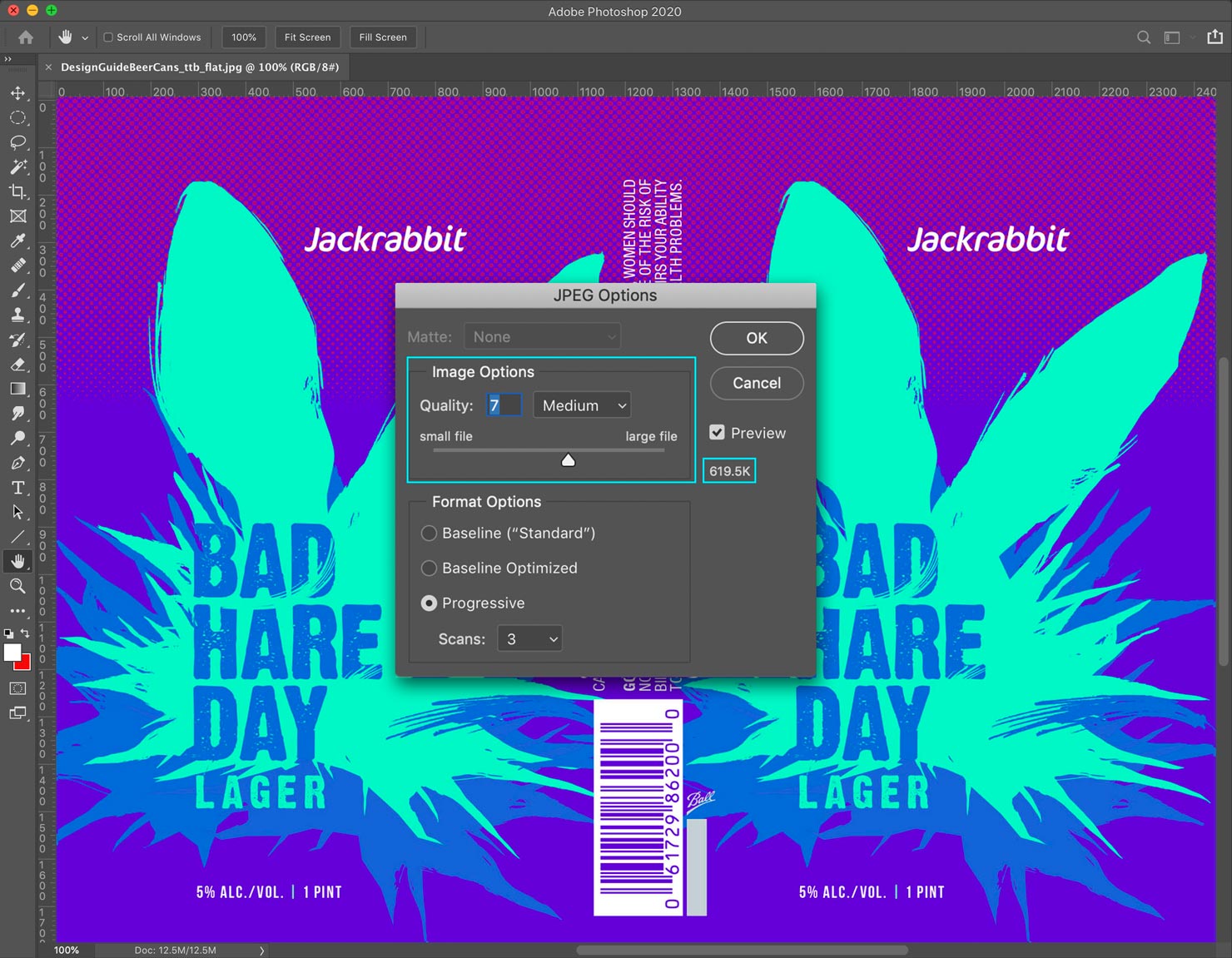
For comparison, below is what the artwork looks like when placed on the vendor dieline or template — which looks different than the file you’ll upload for TTB in that it includes all the extra template lines that will not print, extra bleed on the artwork, template notations, and extra white space surrounding the art.
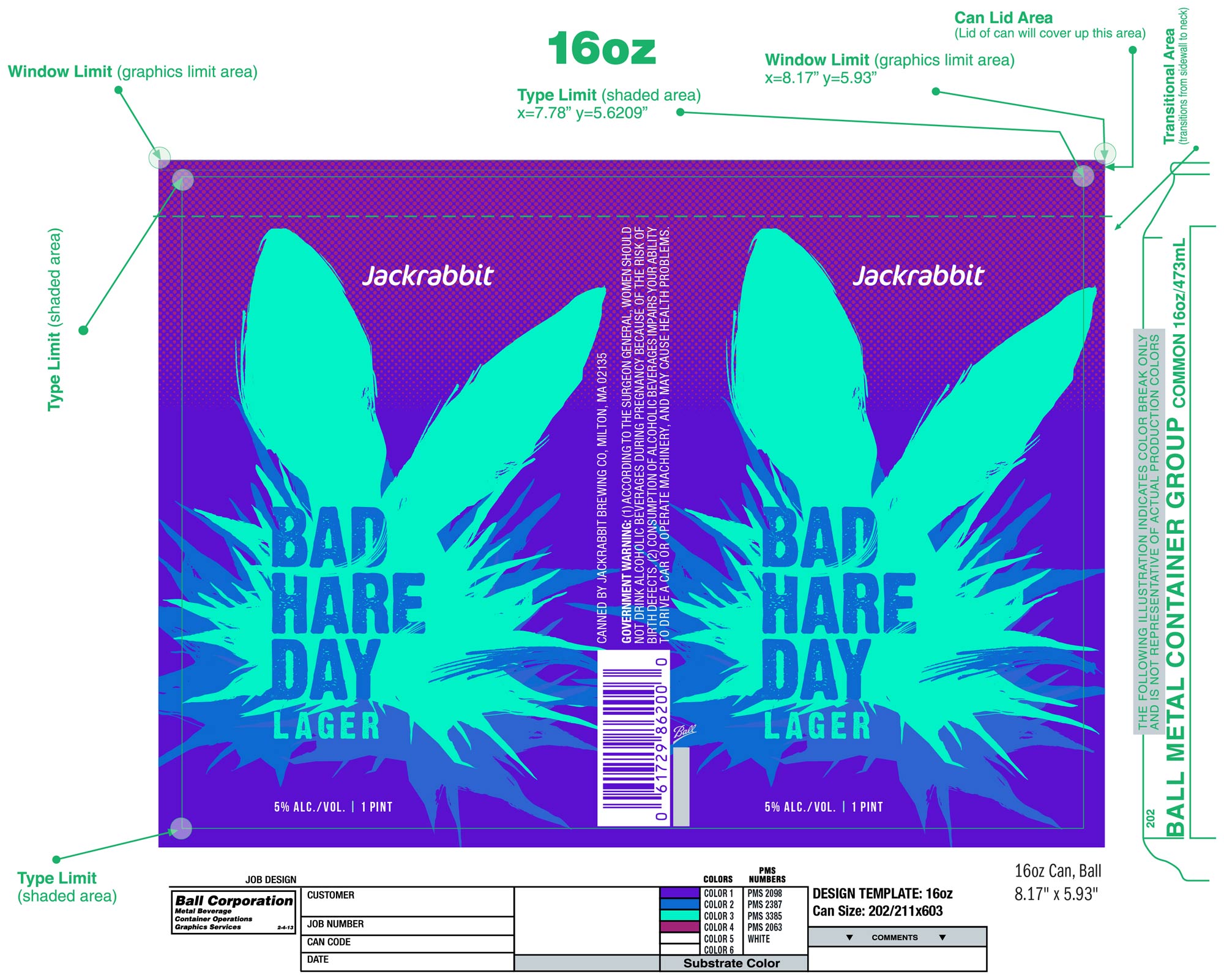
In this example above, we’re using a direct-print design template for Ball. The following list includes some of the common industry templates you might be using for your packaging, including direct-printed cans, shrink-wrapped cans, or labels for cans or bottles.
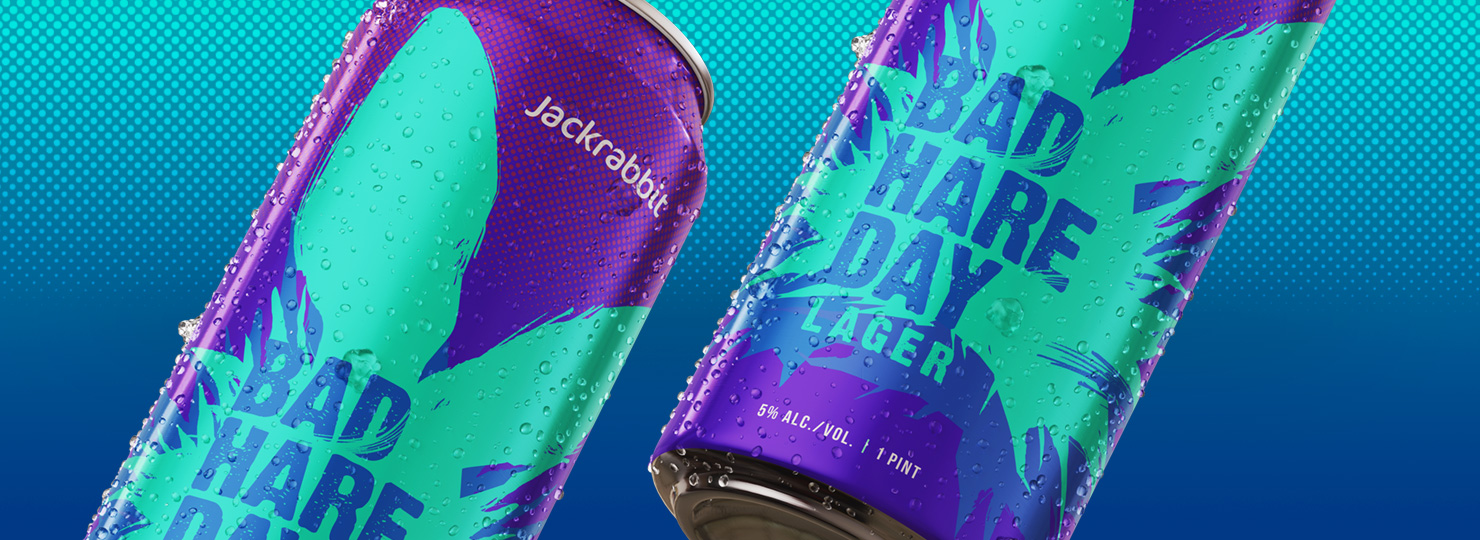
Need help from the creative experts? CONTACT US — We’d be happy to discuss your next packaging project! In fact, we’ve done it all; beer, spirits, wine, hard cider, hard seltzer, and more. LEARN MORE — Check out our packaging design services.
Disclaimer: This Design Guide to Beer Label Requirements does not contain every official regulation that may apply to your malt beverage. Therefore, please check with full federal and state regulations before labeling any product for sale or distribution.